

|
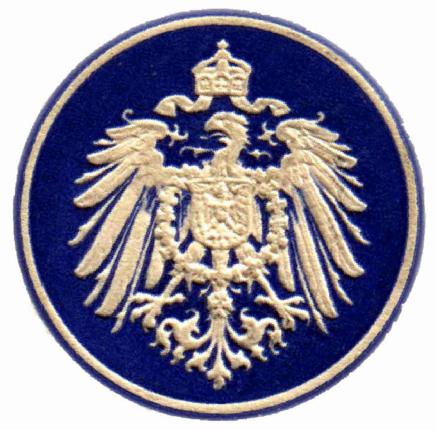
|
Postage Stamps used in the German Marshall Islands 12 -- Date Cancels by Dirk H.R. Spennemann |
|
A variety of date cancels was used during the operation of the German colonial postal offices on Jaluit and Nauru. The main types are illustrated below. Each is discussed in more detail further below. In addition to the genuine cancels, a variety of forged cancels was employed to defraud collectors. Finally, we need to consider the use of genuine cancellers, with illegal, backdated use. The hand written cancels of the atoll post are discussed elsewhere. The cancellers consisted of a wooden-handled metal unit with interchangeable single digits for the dates and a single double-digit slug for the year. A contemporary illustration can be found here. The cancels are usually executed in black ink, although purple ink is also on record. Details are spellled out for each cancel. The general rule issued by the German Reichpost was that stamps with Pfenning values had to be cancelled with one strike of the cancel, preferably centred. Mark values had to be cancelled by applying the cancel twice. The image at the left illustrates this nicely. Some collectors, however, preferred only a single cancellation centred on the stamp. These are in existence as 'cancelled to order' items, made by conniving post masters (in violation of the directive). In addition, the German stamp collecting fraternity's obsession in obtaining cancelled items meant that over time cancels were forged and genuine cancels used to cancel stamps well after they were valid for postage. The following base types of cancels can be distinguished (check further below for forgeries):
|
 |
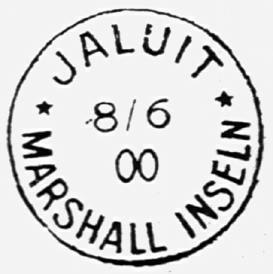 |
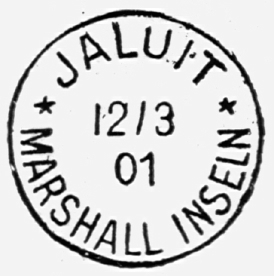 |
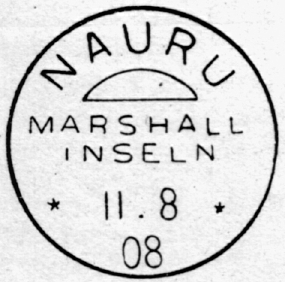 |
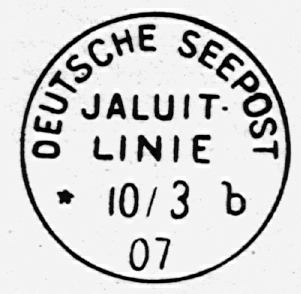 |
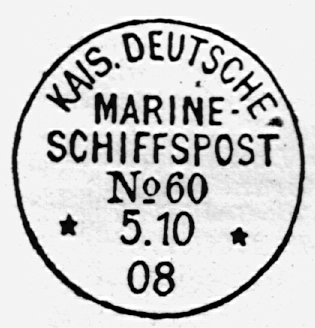 |
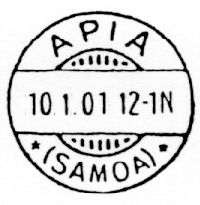 |
| MARSCHALL | MARSHALL INSELN | NAURU | JALUIT LINIE | NAVAL MAIL | WRONG | |
| INSELN | wide nos. | narrow nos. | & ship mail | CANCELS | ||
| [ Details ] | [ Details ] | [ Details ] | [ Details ] | [ Details ] | [ Details ] | [ Details ] |
|
German Post Office Jaluit
|
The post office was opened on 29 March 1889 and operated until the occupation of Jaluit by the Japanese forces on 29 September 1914. During that period two types and cancels, one with a subtype (different number types) were used. |
 |
MARSCHALL INSELN
This cancel, which measures 28mm in diameter, was used from 29 March 1889 until about May 1900. During that period most cancels were black. However between 1895 and 1897 a bluish ink, with a hint of green was used, while a red-violet ink is known to have been used in 1895. Setting variations are known inasmuch the day and month setting exist with and without an oblique separator dash. This canceller was sent back to Germany once the new canceller (see below) had arrived and was first used on 21 May 1900.
Forgeries of note: The cancel with the date 2 December 1898 was forged by François Fournier. The cancel with the date 22 November 1899 (see left) was forged in the mid-1970s by Bernhard Friedrich, using the Friedemann illustration as template. |
 |
Genuine cancel MARSHALL INSELN with wide numbers
This cancel, measuring 27mm in diameter, was first used on 21 May 1900 and reamined in use until the ocupation of Jaluit by Japanese forces on 29 September 1914.
Forgeries of note: A cancel with the date 8 June 1900 (see left) was forged in the mid-1970s by Bernhard Friedrich, using the Friedemann illustration as template. |
 |
Genuine cancel MARSHALL INSELN with narrow numbers Beginning 1 September 1900 a new set of date slugs was used as the old ones had become too worn. This new set is distinguisjable by the narrower figures. Additional illustrations of and more detail on the cancel can be found here. The cancel ink was changed in late 1901 or early 1902 from a black or grey-black of dry/crisp appearance to a deep black and oily-sooty appearance. This allows to identify and date a number of backdated cancels on the Eagle Issue stamps of both the first and the second issue. Forgeries of note: This cancel with a date of 8 August 1897 was used by François Fournier. The cancel with the date 12 March 1901 (see left) was forged in the mid-1970s by Bernhard Friedrich, using the Friedemann illustration as template. |
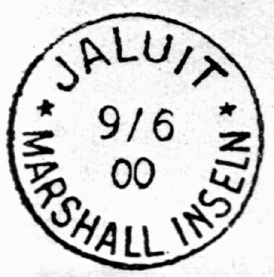 |
Backdated Type II Cancel. The demand for cancelled copies of the Berlin issue Eagle series Marschall overprint stamps meant that unscrupulous individuals backdated a genuine cancel to create early ancellations. As the cancel ink was changed in late 1901 or early 1902 from a black or grey-black of dry/crisp appearance to a deep black and oily-sooty appearance the state of the allows to identify and date a number of backdated cancels on the Eagle Issue stamps of both the first and the second issue. A table of dates for the backdated cancel can be found here. |
Soon after the loss of the German colonies in World War I, the market for German colonial stamps, and in particular used examples, increased dramatically. As a result, forged cancels started to appear as early as mid-1915. Since then an array of forged cancels has been created, which are discussed on the relevant cancel pages.These forgeries are not confined to the Marshall Islands, but are also known from German New Guinea. |
 |
Crude Forged Cancel.
|
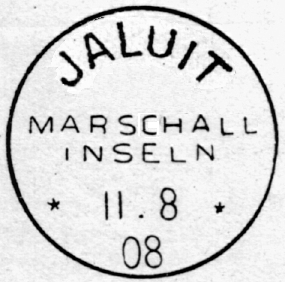 |
Forged Cancel designed similar to cancel type I. Additional illustrations of the cancel can be found here. |
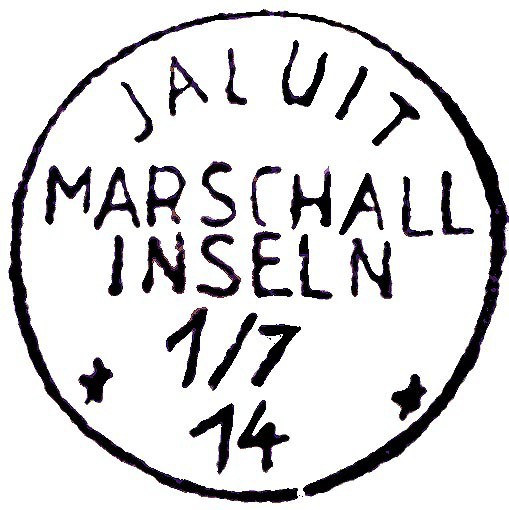 |
Forged Cancel designed similar to cancel I. The words 'Marschall Inseln are larger than in the previous example. Additional illustrations of the cancel can be found here. Illustrations of genuine occupation cancels can be found here. |
Forged 'Kaiserliche Postagentur 'Cancel The cancel was designed similar to the similar to the one used in Samoa. Such a cancel never existed in the Marshall Islands. Examples of cancelled stamps can be found here. |
|
German Post Office Nauru
The post office on Nauru was opened on 14 July 1908 and operated until the occupation of Nauru by British forces on 8 November 1914. |
 |
Standard Cancel for Nauru
Forgeries of note: The cancel with the date 11 August 1908 (see left) was forged in the mid-1970s by Bernhard Friedrich, using the Friedemann illustration as template. |
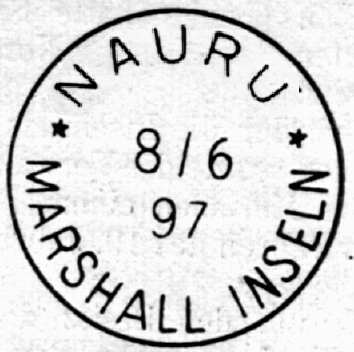 |
Forged Cancel. This cancel follows in layout that of Jaluit but never used in this form on Nauru. Additional illustrations of the cancel can be found here. |
|
German Ships Post
Ships' Mail ('Seepost') cancels exist for those vessels which had a fully fledged mail room. These cancels are dinstinguished by the text "Deutsche Seepost" (German Ships Mail), the name of the line and a letter which designates the vessel if more than one vessel was used. Some of the cancels shown below occur legitimately on Marshall Islands stamps, while others would have been cancelled either fraudulently or on stamps which were placed as 'Mitläufer' on other covers. |
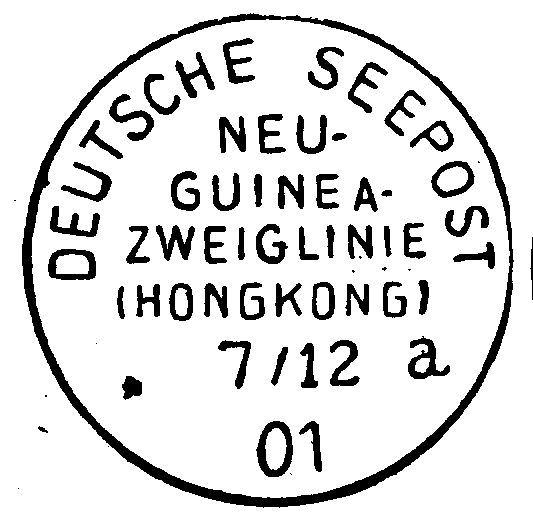 |
Cancel carried by the Norddeutscher Lloyd mail steamer München This service, which touched on Saipan and Pohnpei, was only of short duration. Commenced in summer 1900, it came to an end in February 1901 when the München ran aground in Yap. This cancel can occur as transit cancels on covers, but is extremely unlikely to have been primary cancels on Marshall Islands stamps. |
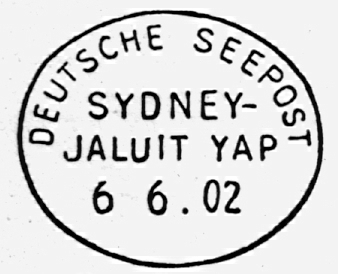 |
German Ships Post cancel for the steamer Oceana The initial route of the Jaluit-Gesellschaft steamer Oceana ran Sydney–Jaluit–Pohpei–Yap–Palau–Pohnpei–Jaluit–Sydney. The service commenced on 1 January 1901. Additional illustrations of the cancel can be found here. |
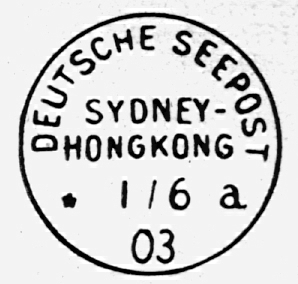 |
German Ships Post cancel for the steamer Oceana When the Norddeutscher Lloyd terminated its Sydney–HongKong run end of 1901, the Jaluit Gesellschaft extended its run to HongKong and included German New Guinea in its route. This necessitated a new cancel. Additional illustrations of the cancel can be found on here. |
 |
German Ships Post cancel for the steamer Germania Additional illustrations of the cancel can be found individual stamps and complete covers. The cancels also exist as forgeries. |
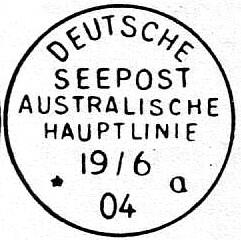 |
German Ships Post cancel for the Australische Hauptlinie The route between Bremen and Sydney was operated by ships of the Norddeutscher Lloyd. Genuine examples of such cancels can not occur on Marshall Islands stamps. Fraudulent cancellations have been created around 1901 or 1902. Associated covers with genuine usage, however, exist, which are shown here. |
|
German Naval Mail
Commencing on 1 June 1897 all Inperial German naval vessels were were issued with their own cancellation devices. Most of the naval cancels are hard to read, with the ship-identifying number not always legible. |
 |
Naval cancel |
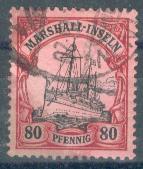 |
Wrong Cancel Types used |
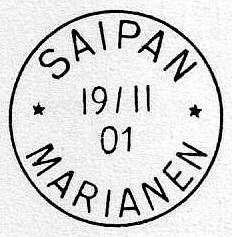 |
Cancels from other German colonies used Occasionally items are offered that carry cancels, from other German Pacific colonies. Most of these are forgeries, such as these from Saipan, or Pohnpei . Some are genuine, such as this example from Yap |
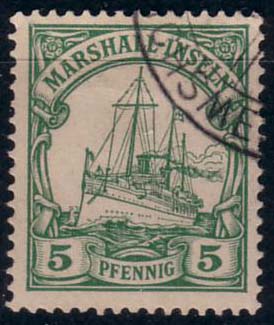 |
On occasion stamps were cancelled with seals destined for other use. These cancels appear to be fraudulent. |
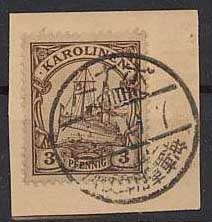 |
When the Japanese occupied German Micronesia, the German stamps were demonetized and could no longer be used for postage. There are examples where German stamps were 'cancelled' with Japanese cancellers. These are creations for the philatelic market and do not represent genuine useage |
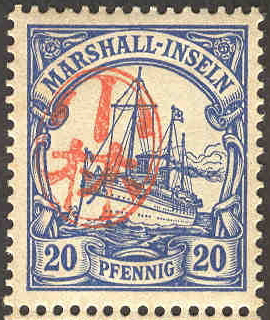 |
Some of the the stamps were courtesy 'cancelled' with the chops of Japanese officers. |
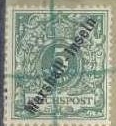 |
Stamps devalued by hand Devalued by the postmaster at the receiving post office. |
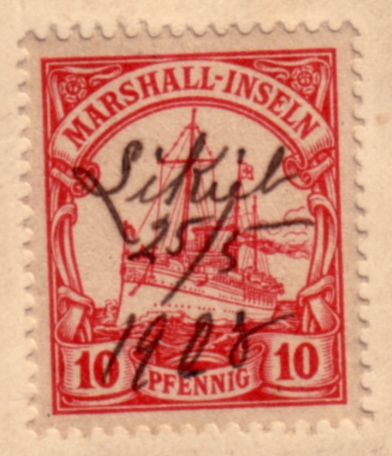 |
Atoll Post Cancel Devalued by the captain of ships operating in the Marshall Islands. These Atoll Post cancels have been subject to much philatelic abuse. |
|
Australian Cancels
|
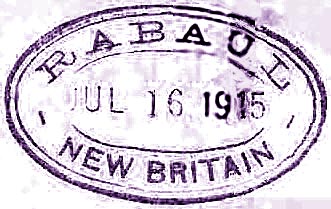 |
Australian occupation cancels Overprinted Marshall Islands stamps used in New Guinea were cabcelled with a rubber stamp. Illustrations of genuine occupation cancels can be found here. |
[Contents]Bibliographic citation for this documentSpennemann, Dirk H.R. (2002). Postage Stamps used in the German Marshall Islands. Date CancelsURL: http:/marshall.csu.edu.au/Marshalls/html/Stamps/Marshalls/Stamps_Cancels.html CONTACT: Dirk H.R. Spennemann, Institute of Land, Water and Society, Charles Sturt University, P.O.Box 789, Albury NSW 2640, Australia. e-mail: dspennemann@csu.edu.au |
| select from the following... | ||||||
|
|
||||||
|
Digital Micronesia-An
Electronic
Library & Archive
is provided free of charge
as an advertising-free
information service
for the world community. It is being maintained by Dirk
HR Spennemann, Associate
Professor in Cultural
Heritage Management,Institute of Land, Water and Society and
School
of Environmental & Information Sciences, Charles
Sturt University,
Albury, Australia. The server
space and technical support are provided by Charles
Sturt University as part of its commitment
to regional engagement. Environmental
SciencesInformation
Sciences
|
||||||